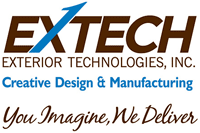Translucent Cellular Polycarbonate Delivers Design Versatility
Performance Standards and Definitions Relating to Polycarbonate In addition to weight, sound transmission and U/R-value, typical manufacturer’s description will include values for light transmission, shading coefficient, solar heat gain coefficient and direct solar transmission. *Light Transmission (LT)Percentage of incident visible light that passes through the sheet. Tests to determine percentage Light Transmission: ISO 9050, EN 410 D65 (380-780 nm) * Visible Light Transmission (VLT)A measure of the amount of visible light that passes through the sheet. A product with a higher visible light (VT) transmits more visible light. VT is expressed as a number between 0 and 1, 0.5 meaning 50 percent light transmission. * Shading CoefficientA measure of the ability of a window or skylight to transmit solar energy. Currently being phased out in favor of Solar Heat Gain Coefficient (SHGC, below.) It is approximately equal to SHGC multiplied by 1.15. Shading coefficient is expressed by a number between 0 and 1. The lower the shading coefficient, the less solar heat it transmits and the greater its shading ability. A low shading coefficient in combination with a high LT percentage and transparency is usually desirable. * Solar Heat Gain Coefficient (SHGC)A measure of how well a window or skylight blocks heat from sunlight. The SHGC is the fraction of the heat from the sun that enters through a window. SHGC is expressed as a number between 0 and 1. The lower a window’s SHGC, the less solar heat it transmits. * Flame Spread Rating (FSR) and Smoke-Developed Index (SDI)The American Society for Testing and Materials (ASTM) Test Method E-84 (Steiner tunnel test) measures how far and how fast flames spread across the surface of the test sample and how much smoke is generated. FSR is expressed as a number on a continuous scale where inorganic reinforced cement board is 0 and red oak is 100. The most common classifications are: Class I, also called A, with a 0-25 FSR; Class II or B with a 26-75 FSR; and Class III or C with a 76-200 FSR. A smoke-developed index not to exceed 450 is required by IBC section 803.1 for interior wall and ceiling finishes classes A, B and C. * ASTM D635-06 Test Method for Rate of Burning of Plasticsis required by IBC for light transmitting plastics only. This test is limited to a small scale flame test and does not include a Smoke Test.
|
||||||||||||||||||||||||||||||||||||||||||||
Conclusion
Cellular or multiwall (PCSS) polycarbonate panels offer considerable versatility for design professionals seeking solutions for canopies, barrel vaults, skylights, translucent walls and signage. Its benefits range from translucency and impact resistance to energy savings and flame and heat resistance. It also can contribute to LEED® points. The key to successful applications is a well-engineered framing system that addresses all of the nuances of this significant and timely building material.
 |
EXTECH/Exterior Technologies, Inc. is a group of engineers and architects and shop gearheads who design and fabricate (and sometimes install) daylighting systems and custom facades and who support architects and building owners. EXTECH holds 13 patents for systems and components for canopies, skylights and walls. www.extechinc.com
|








